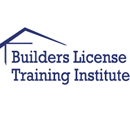Online anytime - 7-Hour Minnesota Weatherization / Renewable Energy Continuing Education Online Anytime
Training Provider: Builders License Training Institute
Online anytime
 No Reviews
No Reviews
| TICKET TYPE | PRICE | QUANTITY |
|---|---|---|
|
One Workshop Ticket more info» | $104.00 | |
Or call: 954-400-0595 | ||
Why Should You Take This 7-Hour Minnesota Weatherization/Renewable Energy Continuing Education Online Anytime course?
In Minnesota, all building contractors and remodelers who contract with a homeowner to construct or improve dwellings by offering more than one special skill must be licensed. 14 hours of state-approved continuing education is required for every two year licensing cycle to maintain this license. At least one hour of Energy Code must be included for every two-year licensing period. There is no longer a requirement for one hour of lead paint training. That requirement changed to Energy Code several years ago.
This 7-Hour Minnesota Weatherization/Renewable Energy Continuing Education Online Anytime course is approved by the State of Minnesota and fulfills 7 credit hours of continued education toward the Minnesota Builders license, Contractors license or Manufactured Home Installer license. This is the fastest and most convenient method of completing your Minnesota builders and remodelers continued education.
Please Note: Half of the builders and remodelers in Minnesota must renew each year by March 31st. The State of Minnesota will not allow you to take the same course twice within a 2 year cycle.
7-Hour Minnesota Weatherization/Renewable Energy Continuing Education Online Anytime
If you have specific questions about your Minnesota Builders License, they should be directed to the Minnesota Department of Labor and Industry at 651-284-5012
Important: This course is approved for Residential Builders, Home Installers and Building Officials. You will have access to this course for one year, although we will extend that time if needed.
What Will Be Included In This 7-Hour Minnesota Weatherization/Renewable Energy Continuing Education Online Anytime course?
Weatherization: Students successfully completing this three hour portion will gain confidence in their ability to reduce building envelope failure using proven methods of construction. Building homes that are well protected from the weather is important for all building professionals. The majority of problems stem from improper procedures and workmanship. Sometimes a problem is found in the design of a home, adding to disputes over poor workmanship. The very best defense against moisture issues in a home is in training the workforce in how moisture enters into the internal structural areas of a home and what procedures to use in the many tasks involved to head off these problems.
Renewable Energy: Renewable energy is contributing more and more to the world's ever-rising energy demands. Wind and solar energy generation systems are about to reach the level of affordability that will allow them to be considered equal to conventional power generation systems like fossil fuel plants and hydroelectric dams. Contractors should know what products are on the market, what rebates and incentives are available for their customers who want to take advantage of energy efficient resources and components.
Weatherization I
Objectives: 1) Understand cause and effect of weatherization problems within the construction industry. 2) Understand contractor responsibilities, what to avoid and what to embrace. 3) Recognize the cause of most below-grade moisture issues and the remedies that should be taken.
Weatherization II
Objectives: 1) Recognize the causes of high humidity in homes and how housewraps and flashings work. 2) Describe some of the steps and terminology for installing flashings and code minimums. 3) Know how to prepare window and door openings for proper installation.
Weatherization III
Objectives: 1) Recognize the purpose of ventilation and ventilation requirements. 2) Understand how a capillary break works with other components to prevent moisture intrusion. 3) Be aware of consumer remedies and contractor responsibilities.
Wind Power I
Objectives: 1) Be able to describe the history of harnessing the wind's energy. 2) Identify the difference between wind energy and conventional energy production. 3) Appreciate some of the "Pro vs. Con" debates regarding Green Renewable Wind generated energy.
Wind Power II
Objectives: 1) Understand what "distributed" wind power really means to home owners, communities and industry. 2) Appreciate some of the solutions addressing concerns over the harvesting of wind energy. 3) Recognize the concerns of the home owner or small business owner when deciding on whether or not to pursue wind energy.
Solar Energy Use I
Objectives: 1) Understand the difference between "passive" and "active" solar energy use. 2) Know what PV stands for, and how PV solar energy collection varies from traditional solar heat collection. 3) Gain an awareness of the benefits of solar energy: for residential and commercial use as well as how solar energy benefits the environment.
Solar Energy Use II
Objectives: 1) Understand some small business or home owner advantages. 2) Realize there is a price to pay for clean, green energy. 3) Recognize pros and cons when considering solar.
Solar Energy Use III
Objectives: 1) Be aware of the history of man harnessing the sun's energy. 2) Know the amount of solar energy versus conventional fuel produced energy in the United States. 3) Learn some new terms and gain an appreciation for what "green energy" really means.
Assessment
Final Exam
Weatherization: Students successfully completing this three hour portion will gain confidence in their ability to reduce building envelope failure using proven methods of construction. Building homes that are well protected from the weather is important for all building professionals. The majority of problems stem from improper procedures and workmanship. Sometimes a problem is found in the design of a home, adding to disputes over poor workmanship. The very best defense against moisture issues in a home is in training the workforce in how moisture enters into the internal structural areas of a home and what procedures to use in the many tasks involved to head off these problems.
Renewable Energy: Renewable energy is contributing more and more to the world"s ever-rising energy demands. Wind and solar energy generation systems are about to reach the level of affordability that will allow them to be considered equal to conventional power generation systems like fossil fuel plants and hydroelectric dams. Contractors should know what products are on the market, what rebates and incentives are available for their customers who want to take advantage of energy efficient resources and components.
Weatherization I
Objectives: 1) Understand cause and effect of weatherization problems within the construction industry. 2) Understand contractor responsibilities, what to avoid and what to embrace. 3) Recognize the cause of most below-grade moisture issues and the remedies that should be taken.
Why is There a Problem?
1. Rationale
2. Primary Warranty and Insurance Claims
3. Solutions
4. Experience
5. Contractor Responsibilities
6. Insurance Availability and Affordability
The Building Envelope System
1. Building Envelope System
2. Performance Objectives
3. Physical Components
4. Sources of Moisture Intrusion
5. Results of Failure
Foundation Construction
1. Thermal and Moisture Protection
2. Groundwater
3. Gutters
4. Crawl spaces
5. Damp proofing and Waterproofing
6. Girders and Beams
Assessment
Weatherization II
Objectives: 1) Recognize the causes of high humidity in homes and how housewraps and flashings work. 2) Describe some of the steps and terminology for installing flashings and code minimums. 3) Know how to prepare window and door openings for proper installation.
Wall Construction
1. Wall Framing
2. Vapor Diffusion Problems
3. Recommendations
4. House Wrap and Underlayment
5. Window and Door Openings
6. Flashing and Caulking
7. Siding
Roof Construction
1. Skylights
2. Moisture Penetration
3. Roof Valleys
4. Shingles and Shakes
5. Roof Sheathing
6. Repairs
7. Flashing
Window and Door Installation
1. Windows, Doors and Skylights
2. Proper Flashing
3. Door and Window Installation
Assessment
Weatherization III
Objectives: 1) Recognize the purpose of ventilation and ventilation requirements. 2) Understand how a capillary break works with other components to prevent moisture intrusion. 3) Be aware of consumer remedies and contractor responsibilities.
Ventilation System Installation and Requirements
1. Code
2. Attic Ventilation
3. Heating, Ventilation and Air Conditioning
Building Envelope Best Practices
1. Moisture Retarding Construction
2. Capillary Breaks
3. House Wrap Installation
4. Window and Door Installation
5. Siding Installation
6. Roofing Best Practices
Consumer Remedies
1. Common Mistakes
2. Preventative Measures
3. Warranties
4. Complaints
5. Arbitration and Dispute Resolution
Assessment
Wind Power I
Objectives: 1) Be able to describe the history of harnessing the wind"s energy. 2) Identify the difference between wind energy and conventional energy production. 3) Appreciate some of the "Pro vs. Con" debates regarding Green Renewable Wind generated energy.
1. History
2. Products and Components
3. Sources of Energy Production
4. Offshore Production: Pros and Cons
5. Onshore Production: Pros and Cons
Assessment
Wind Power II
Objectives: 1) Understand what "distributed" wind power really means to home owners, communities and industry. 2) Appreciate some of the solutions addressing concerns over the harvesting of wind energy. 3) Recognize the concerns of the home owner or small business owner when deciding on whether or not to pursue wind energy.
1. Distributed wind power
2. Automation and Safety Factors
3. Grants and Incentives
4. Residential and Small Business Wind Generation
Assessment
Solar Energy Use I
Objectives: 1) Understand the difference between "passive" and "active" solar energy use. 2) Know what PV stands for, and how PV solar energy collection varies from traditional solar heat collection. 3) Gain an awareness of the benefits of solar energy: for residential and commercial use as well as how solar energy benefits the environment.
1. Solar Energy: Passive/Active
2. Solar Photo Voltaic
3. Industry Acronyms and Terms
4. Residential and Small Business Solar Use
5. Rebates and Incentives
Assessment
Solar Energy Use II
Objectives: 1) Understand some small business or home owner advantages. 2) Realize there is a price to pay for clean, green energy. 3) Recognize pros and cons when considering solar.
1. Small Business Systems
2. Residential Use
3. Solar Pros and Cons
4. Structural Considerations
5. Installation and Mounting Considerations
Assessment
Solar Energy Use III
Objectives: 1) Be aware of the history of man harnessing the sun"s energy. 2) Know the amount of solar energy versus conventional fuel produced energy in the United States. 3) Learn some new terms and gain an appreciation for what "green energy" really means.
1. Solar Harvesting
2. Solar Power Plants
3. Industry Acronyms and Terms
Assessment
Final Exam
| COURSE LOGISTICS | |
|---|---|
| Certificates | For live classes, certificates will be issued on day of course completion. |
| Food | No food provided |

The Builders License Training Institute helps thousands of builders and contractors get licensed and complete their continuing education requirements each year. Our courses are builder-friendly and guide you through every step of the process. All of our courses are created by real builders with decades of experience and expertise. Study at your own pace 24/7 from any computer or mobile device.

Questions? 954-400-0595


